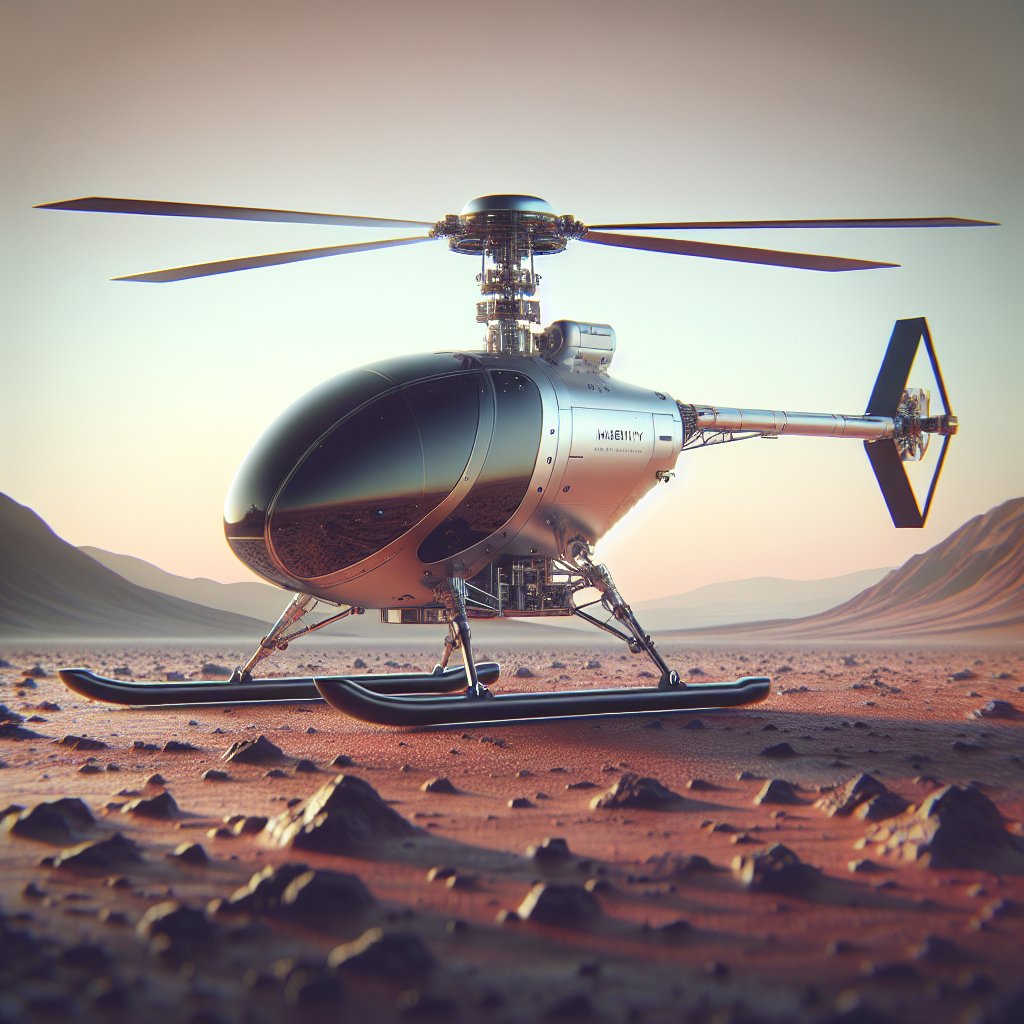The Mars Helicopter Ingenuity represents a groundbreaking advancement in the exploration of other planets. As the first powered flight on another world, Ingenuity has opened up new possibilities for how we can study and understand the Martian landscape and beyond. This article delves into the significance of Ingenuity’s mission, its technological innovations, and the future implications for planetary exploration.
The Birth of Ingenuity: A Technological Marvel
Ingenuity’s journey began as a technology demonstration, a project that was initially met with skepticism due to the challenges of flying in Mars’ thin atmosphere. The atmosphere on Mars is only about 1% as dense as Earth’s, making it difficult for a helicopter to generate the necessary lift. However, the team at NASA’s Jet Propulsion Laboratory (JPL) was determined to overcome these obstacles.
The design of Ingenuity is a testament to human ingenuity and engineering prowess. Weighing just 1.8 kilograms, the helicopter is equipped with two counter-rotating blades that spin at around 2,400 revolutions per minute, much faster than a typical helicopter on Earth. This high rotation speed is crucial for achieving lift in the thin Martian air.
Ingenuity is powered by solar panels that charge its lithium-ion batteries, allowing it to fly for short periods. The helicopter is also equipped with a range of sensors, including a navigation camera, an altimeter, and an inertial measurement unit, which help it maintain stability and navigate the Martian terrain.
The development of Ingenuity required innovative solutions to numerous challenges, from miniaturizing components to ensuring the helicopter could withstand the harsh conditions of space travel and the Martian environment. The successful deployment and operation of Ingenuity on Mars is a testament to the dedication and creativity of the engineers and scientists involved in the project.
Ingenuity’s Mission: Paving the Way for Future Exploration
Ingenuity’s primary mission was to demonstrate the feasibility of powered flight on Mars. Its successful flights have proven that aerial exploration is possible on other planets, opening up new avenues for scientific discovery. The helicopter’s ability to fly over the Martian surface provides a unique perspective that complements the data collected by rovers and orbiters.
During its initial mission, Ingenuity completed a series of test flights, each more ambitious than the last. These flights demonstrated the helicopter’s ability to take off, hover, maneuver, and land autonomously. Ingenuity’s success has provided valuable data that will inform the design of future aerial vehicles for planetary exploration.
Beyond its role as a technology demonstrator, Ingenuity has also contributed to the scientific goals of the Mars 2020 mission. By scouting potential paths and areas of interest for the Perseverance rover, Ingenuity has helped optimize the rover’s exploration strategy. This collaboration between aerial and ground-based exploration represents a new paradigm in planetary science.
The success of Ingenuity has inspired plans for more advanced aerial vehicles that could explore other planets and moons in our solar system. Future missions may include helicopters equipped with scientific instruments to study the atmosphere, geology, and potential signs of life on other worlds. Ingenuity’s achievements have laid the groundwork for these exciting possibilities.
The Future of Planetary Exploration: Beyond Mars
Ingenuity’s success has sparked interest in the development of aerial vehicles for exploring other celestial bodies. The lessons learned from Ingenuity’s mission are being applied to the design of future helicopters and drones that could explore the diverse environments of our solar system.
One of the most promising targets for aerial exploration is Titan, Saturn’s largest moon. Titan’s dense atmosphere and low gravity make it an ideal candidate for helicopter missions. NASA’s Dragonfly mission, set to launch in the mid-2020s, will send a rotorcraft to Titan to study its surface and atmosphere. Dragonfly will build on the technological advancements demonstrated by Ingenuity, using its ability to fly to explore multiple sites across Titan’s varied landscape.
Other potential targets for aerial exploration include Venus, with its thick atmosphere and extreme conditions, and the icy moons of Jupiter and Saturn, where helicopters could help search for signs of subsurface oceans and potential habitability. The ability to fly over these challenging terrains would provide unprecedented access to areas that are difficult or impossible to reach with traditional landers or rovers.
As we look to the future, the success of Ingenuity has highlighted the importance of innovation and adaptability in space exploration. The development of aerial vehicles for planetary exploration will require continued advancements in technology, including improvements in power systems, navigation, and autonomy. These efforts will be crucial for expanding our understanding of the solar system and our place within it.
In conclusion, the Mars Helicopter Ingenuity has not only achieved a historic milestone in space exploration but has also paved the way for a new era of planetary science. Its success has demonstrated the potential of aerial vehicles to enhance our exploration capabilities and has inspired a new generation of missions that will continue to push the boundaries of what is possible. As we continue to explore the cosmos, Ingenuity’s legacy will serve as a reminder of the power of human creativity and determination in the pursuit of knowledge.










